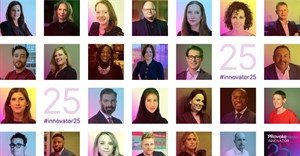
Executives consume more content but from fewer sources

Overwhelmed by the amount of content coming at them, executives say they are more discerning about the sources they chose and reward brands that are credible thought leaders with sales, loyalty and advocacy.
The study, ‘Thought leadership disrupted: New rules for the content age’, explores the continuing relevance of one of marketing’s most enduring and popular strategies at a time when the explosion of content is overwhelming the c-suite. It is based on a survey of more than 1,600 producers and executive consumers of thought leadership content worldwide, including Africa.
The research concludes that while thought leadership can still offer big rewards, practitioners face several challenges. These include the need to refocus on producing original, evidence-based content and embed greater discipline in its development – while at the same time continuing to push back the frontiers in terms of targeting, presentation and delivery.
“C-suite and senior executives are overwhelmed by content but continue to seek out new thinking and ideas that are credible, innovative and fact-based. For marketers to make the list, they need to reverse the trend of ‘more is better’ in favour of doing less, but more impactful, work,” said Jeff Pundyk, SVP global integrated content solutions at The Economist Group.
Lars Erik Grønntun, chairman and CEO of Hill+Knowlton Strategies EMEA added, “The study exposed a big shortfall in the discipline applied to the development of thought leadership. Presently marketers appear to be struggling with internal alignment and who to involve, as well as connecting goals and KPIs. Thought leadership is a strategic activity and, as such, should apply far greater levels of rigour, much as you’d expect of any other high value activity.”
Summary of findings
- Three out of five global executives sometimes feel confused or overwhelmed by the volume of content they encounter, with more than half noting that “intrusiveness” has increased.
- Still, marketers continue to churn out content: 80% plan to increase the amount of thought leadership they produce in the coming 12 months.
- Both executives and marketers agree that, on average, only a quarter of all the thought leadership content seen every day is engaged with, leaving much to go to waste.
- More than 60% of marketers strongly agree or somewhat agree that internal alignment is a barrier to creating effective thought leadership.
- On a more positive note, the vast majority of executives recognise an improvement in presentation and accessibility.
- However, 75% have become more selective about the thought leadership they consume, with just over 80% citing the volume of content as the reason.
- Yet 33% of executives consume thought leadership daily and 20% have increased consumption “a lot” over the past 12 months.
- In addition, after consuming compelling thought leadership, seven in ten consume more from that same source; 76% are influenced in their purchasing decisions, 67% would be willing to advocate for that brand; and 83% are influenced in the choice of potential business partner.
- Marketers see thought leadership as a flexible strategy that can help with a range of goals: differentiation (47%); recognition for company or individuals; (42%) building brand awareness (34%); increasing revenue (27%); paving the way for a change of direction or entry into a new market (20%); and supporting the policy agenda (17%). However only 8.8% currently use thought leadership to campaign on societal issues.
- Compelling thought leadership is “innovative”, “big picture,” “credible,” and “transformative,” while unimpressive content is “superficial,” “sales driven,” and “biased.”
- Credibility of thought leadership is based on the quality of research, not the brand; nearly half of executives would consider a new source of content if it were a “source of hard facts.”
Definition of thought leadership used in the study
Thought leadership is the practice of influencing a community of interest by developing information, analysis and insight that helps its audience understand its world and plan for the future. It can be delivered through any medium and can help companies raise awareness, shift perception and increase the status of their brand.
For more information, click here.
















